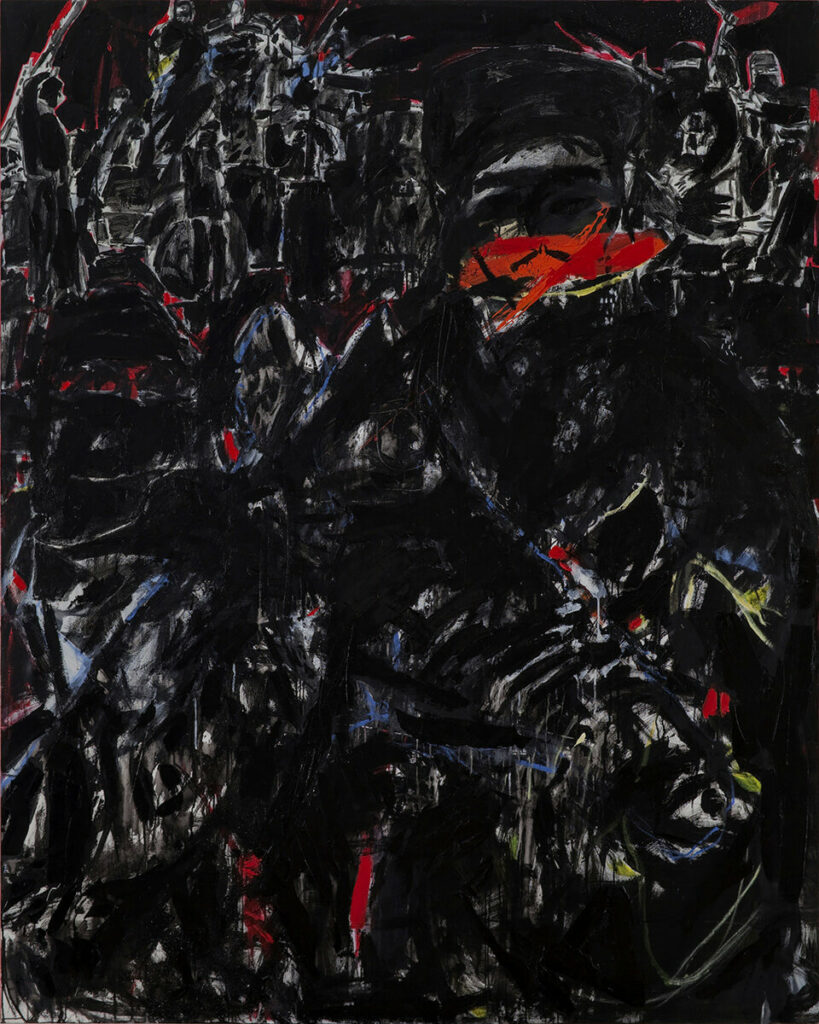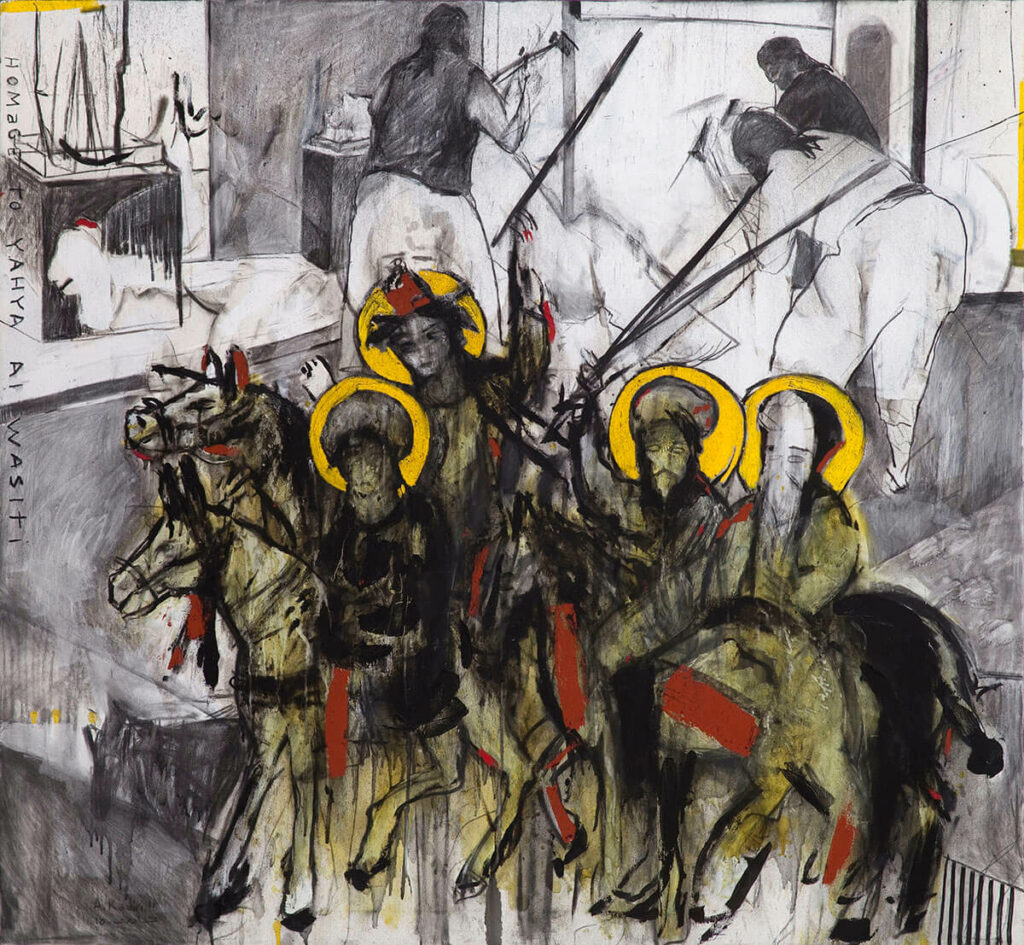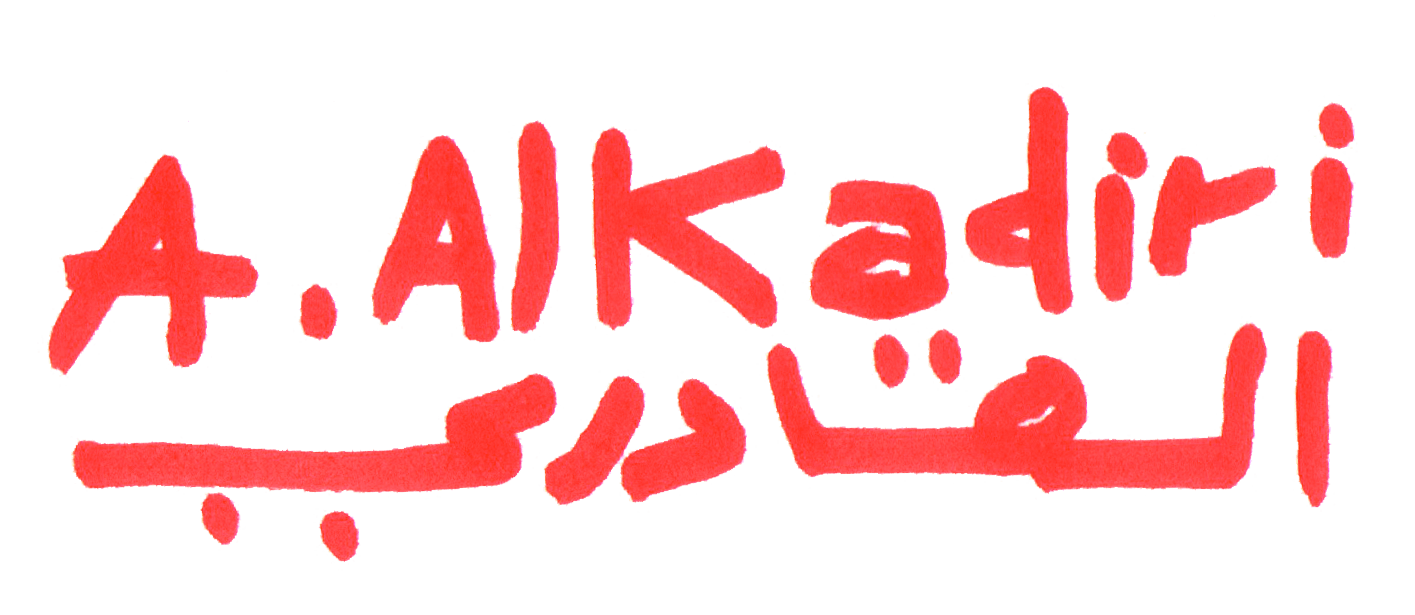AL MAQAMA | 2016
A year ago, the pioneering Iraqi artist Dia Azzawi sent me a gift: a new limited print edition of the original “Maqamat al-Hariri” based on the manuscript found in the Bibliothèque Nationale in Paris. Those involved in the reprint were not so much interested shedding light on the literary text and narrative in as much as on the exceptional and dazzling illustrations that the Iraqi artist Yahya Al-Wasiti produced to accompany the text.
Even though these works were not new to me I was profoundly moved and fascinated to capture my entire being for days during which I would return again and again to look at this visually unique work of art. It was a feeling no less than what I felt when I first set eyes on the works of Paul Klee or Matisse and other pioneers of modern art. These works [by Al-Wasiti] were able-through their transparency, sensitivity, and the ability of the artist to capture the psychological dimension of the characters and thereby liberate the illustrations of their traditional form-to restore the distorted image I had of a bygone civilization.
It changed my overall perception of Arab-Islamic visual culture. It was only natural to acknowledge such a perspicacious, freethinking and pioneering artistand dedicate a work or painting that pays tribute to this moment as a token of gratitude to the artist who was born more than 700 years ago and yet managed to reignite my appetite for coloring after a long period of struggling to create a (contemporary) work of art.
On the 5th of July of the same year, which coincided with my birthday, Abu Bakr al-Baghdadi declared himself caliph over the territories of the Islamic State in his first public appearance. I could not but control myself with a work of art that documented this critical moment in modern Arab history and I titled it “Al-Maqama 2014”. Several events ensued that year but the destruction of the Mosul Museum in February had a huge impact on me.
Those images and videos that recorded the destruction in all its aggressiveness and violence had the exact adverse impact on me than Al-Wasiti’s illustrations. The latter rebukes life, art, and beauty while the former glorifies violence and mutilation and though I insisted on ignoring it, it somehow managed to seep through onto the surface of my canvas through the charcoal sticks that resemble those images in their severity, fragility, and transience. It is as if the act of destroying [with its image of] falling monuments and rising dust clouds resembles the effect of the charcoal stick as it reacts and moves [falling and rising] swiftly over the surface of the canvas. With one puff everything disappears including the political reality and ideology underpinning the destructive machine decimating the historical and civilizational heritage of our region. I began this series with a painting paying homage to Al-Wasiti.
It soon became a project and a statement in which the current moment, colored in black and white, is turned into an archive from the past and in which the past, embodied in the works of al-Wasiiti whose colors glorify light and permanence, is strongly recollected. This exhibition is a tribute to al-Wasiti and his age and everything he embodied: freethinking and enlightenment. It is also a tribute to Al-Azzawi who, I discovered lately, was in charge of moving and exhibiting the historic monuments including the winged bull that was transferred from the city of Khorsabad to the Mosul Museum.

5th of July, 2014
Oil on canvas
250 x 200 cm

26th of February 2015
Oil and charcoal on canvas
Collection of Sursock Museum, Beirut
200 x 160 cm

26th of February 2015, St. Georges
Oil and charcoal on canvas
145 x 90 cm

The Round City
2015 - 2017
Oil and charcoal on canvas
145 x 90 cm

The Funeral
2015 - 2017
Oil and charcoal on canvas
200 x 150 cm

June 21, 2017
2016 - 2017
Oil and charcoal on canvas
200 x 250 cm

Destroyed by ISIS in Museum
2015
Oil and Charcoal on canvas
95 x 150cm

AlMaqama 2014
Oil and Charcoal on canvas
140 x 150 cm
